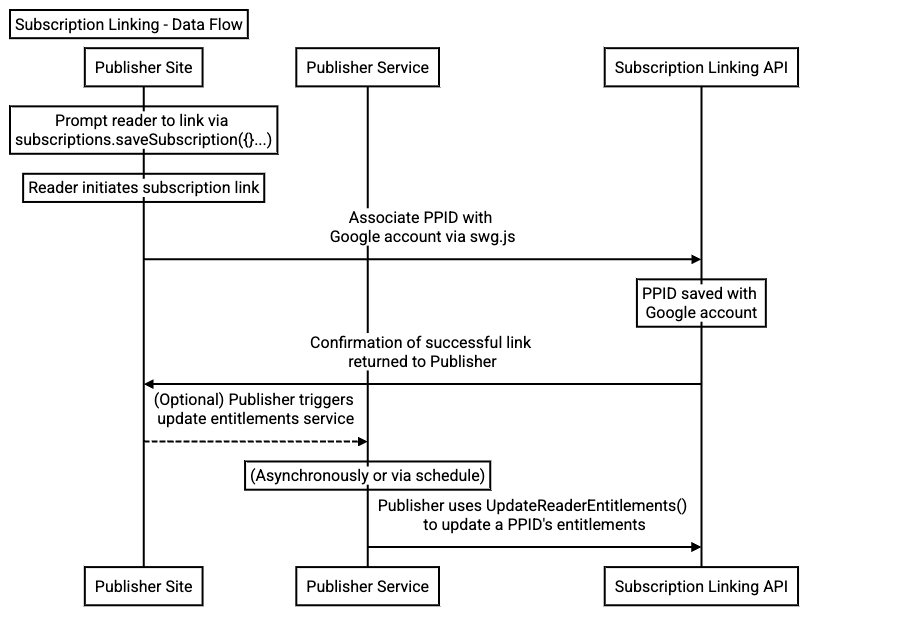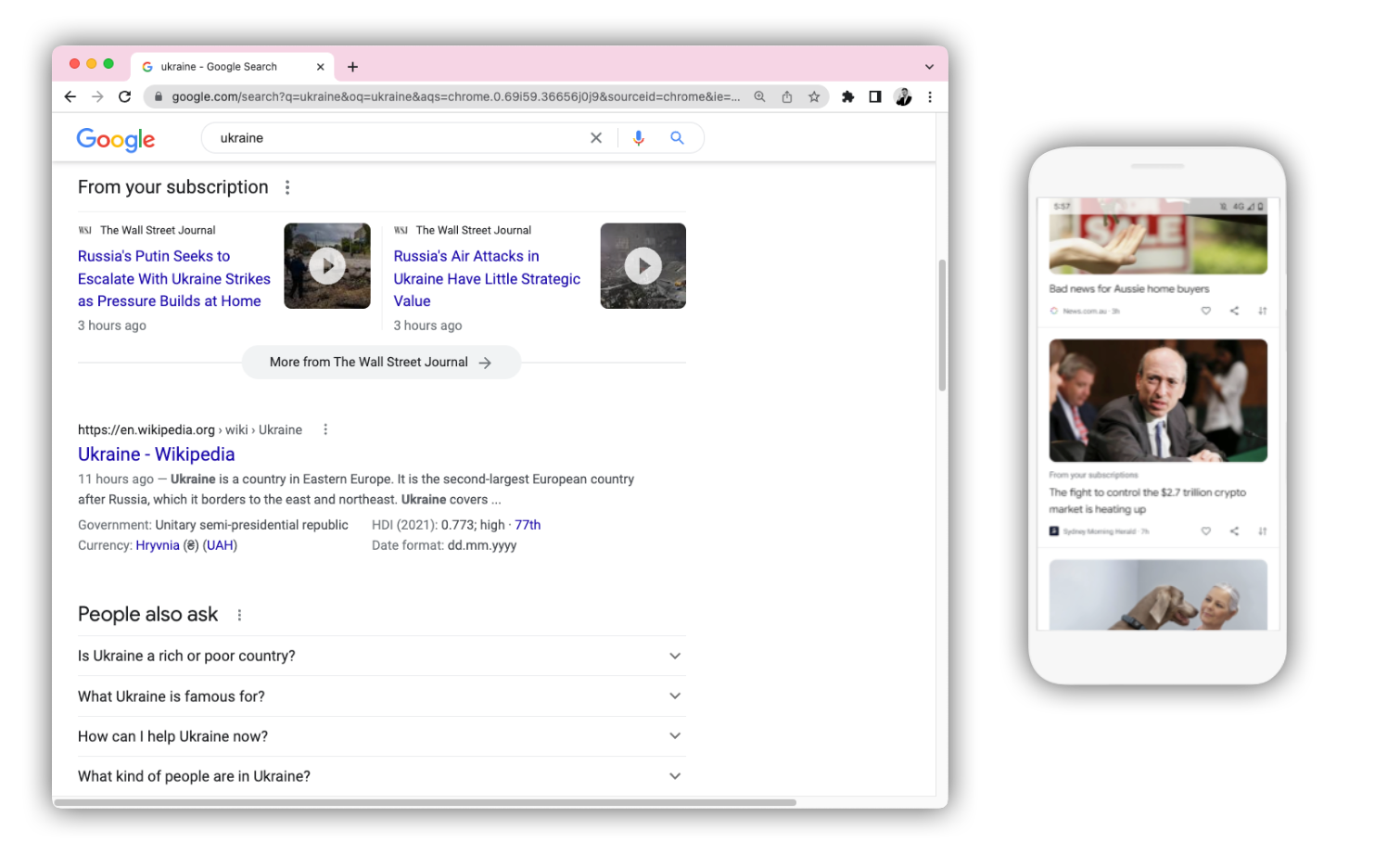
Figura 1. Diagrama de sequência do fluxo de dados de alto nível do processo de vinculação de assinaturas.
Para implementar a vinculação de assinaturas, o site de um editor precisa usar o JavaScript do lado do cliente para iniciar a vinculação dos leitores e um serviço do lado do servidor para gerenciar os direitos dos leitores. Esses dois sistemas usam informações da página da Web hospedada, da configuração do Publisher Center da sua publicação e das informações da conta de serviço do Google Cloud.
Como vincular uma assinatura
- Um leitor com direitos de assinatura ou contribuição paga chega ao seu site.
- Seu código no lado do cliente usa
swg.jspara que o leitor possa vincular a conta dele à Conta do Google e receber os benefícios da associação usando um botão ou call-to-action. que você cria e exibe no seu site. - Depois de acionar a call-to-action (explicitamente com um clique ou implicitamente como resultado de outra ação ou estado), o leitor faz login na Conta do Google (ou seleciona uma das contas ativas) e concede permissão ao editor para associar as informações do leitor à Conta do Google. O editor cria um identificador fornecido pelo editor (PPID) para o leitor como parte da solicitação, que é salvo com a Conta do Google do leitor e usado para interações subsequentes da API.
- Após conceder a permissão, o leitor é enviado de volta para o site do editor. Depois, o editor poderá informar ao Google os direitos do leitor.
- (Assíncrono) Os editores enviam informações ao Google para cada leitor que tiver vinculado a conta usando os PPIDs para atualizar os registros do Google sobre os direitos do PPID. O registro do Google dos direitos de um PPID precisa se manter atualizado. Caso contrário, esses registros serão excluídos. Um registro fica obsoleto 30 dias após a data de validade e é apagado.
Vantagens
Quando um leitor acessa o site de um editor com integração de links de assinatura e paga por uma assinatura ou contribuição neste site, ele pode vincular a conta de editor à própria Conta do Google. Esses leitores se qualificam para ter maior visibilidade do conteúdo desta publicação nos produtos do Google, como a Pesquisa e o Discover. Isso permite que os leitores maximizem o consumo de conteúdo das publicações que pagaram. Os leitores podem desvincular a conta de editor da própria Conta do Google a qualquer momento ou com uma ação fornecida pelo editor.
Resumo dos benefícios para leitores
- Os leitores pesquisam qualquer conteúdo, notícias ou não, e acessam a lista "Das suas assinaturas".
- Os leitores interagem com o Discover usando a tela inicial do Android ou o iOS no Google app, no Chrome ou um widget da tela inicial. Eles também podem ver a seção "Suas assinaturas" no Discover.

Figura 2. Captura de tela do módulo "Das suas assinaturas" em uma página de resultados de pesquisa em computadores e dispositivos móveis.
Benefícios do editor para assinaturas vinculadas
- Configuração no lado do servidor resiliente mais eficiente e de longo prazo para o gerenciamento de contas
- Não exige a criação de um IdP OAuth e de um endpoint de direitos públicos, como as versões anteriores da vinculação de conta.
- Melhoramos o engajamento e a retenção de usuários apresentando de outra forma o conteúdo da publicação nas páginas de resultados do mecanismo de pesquisa do Google.
